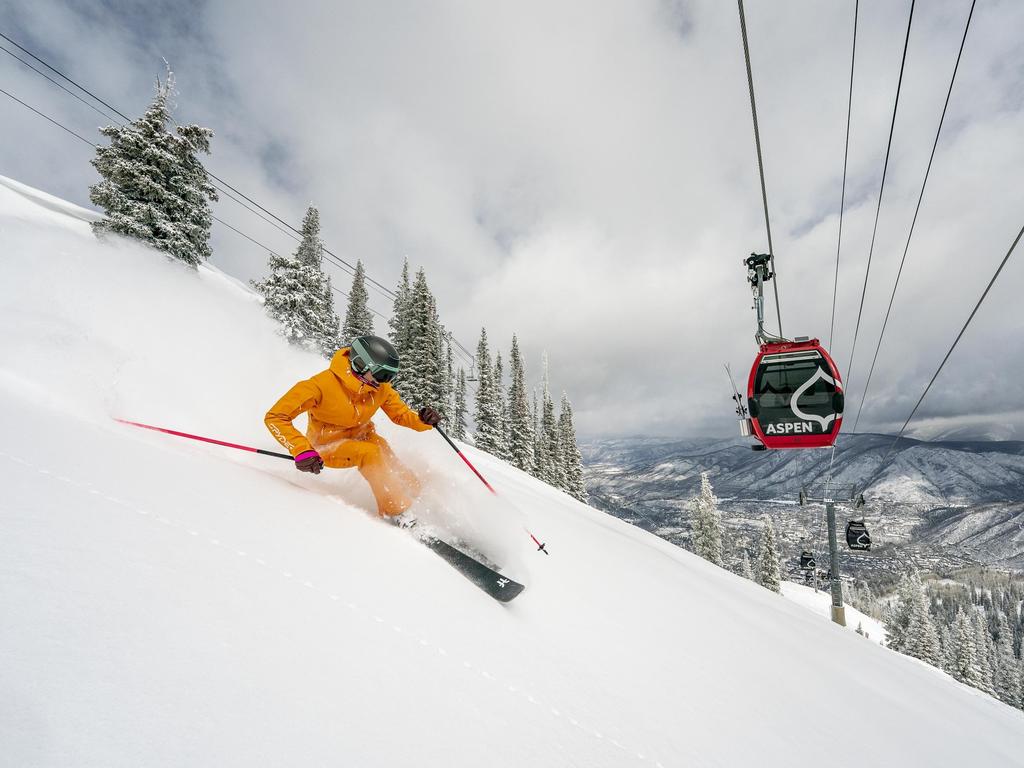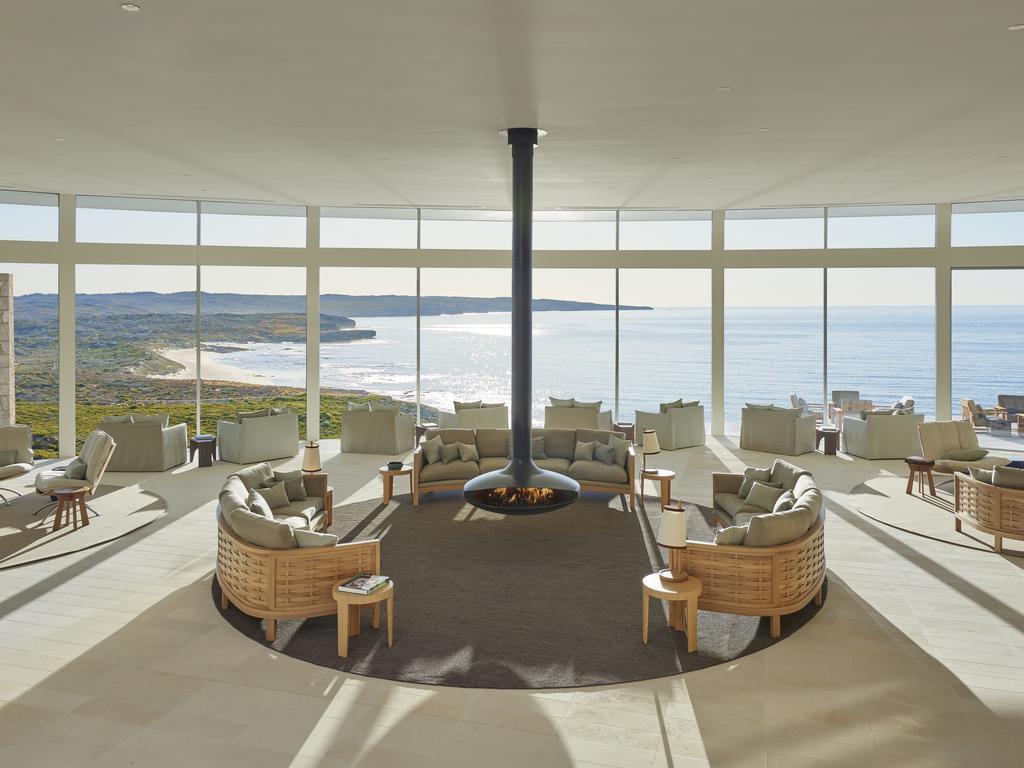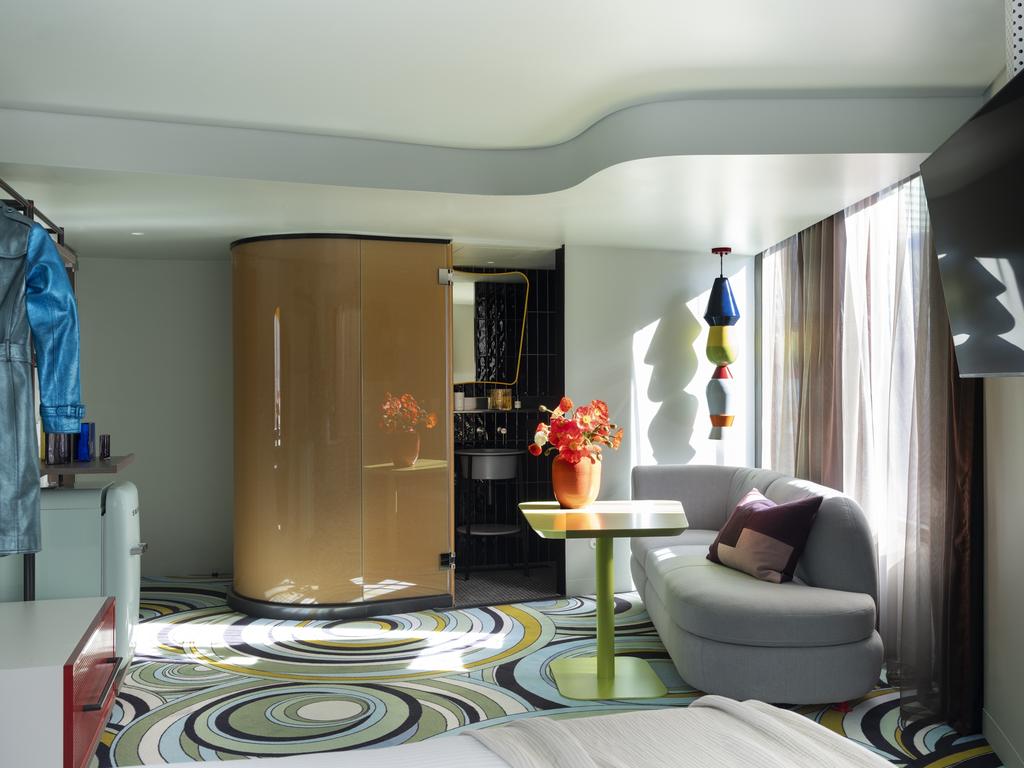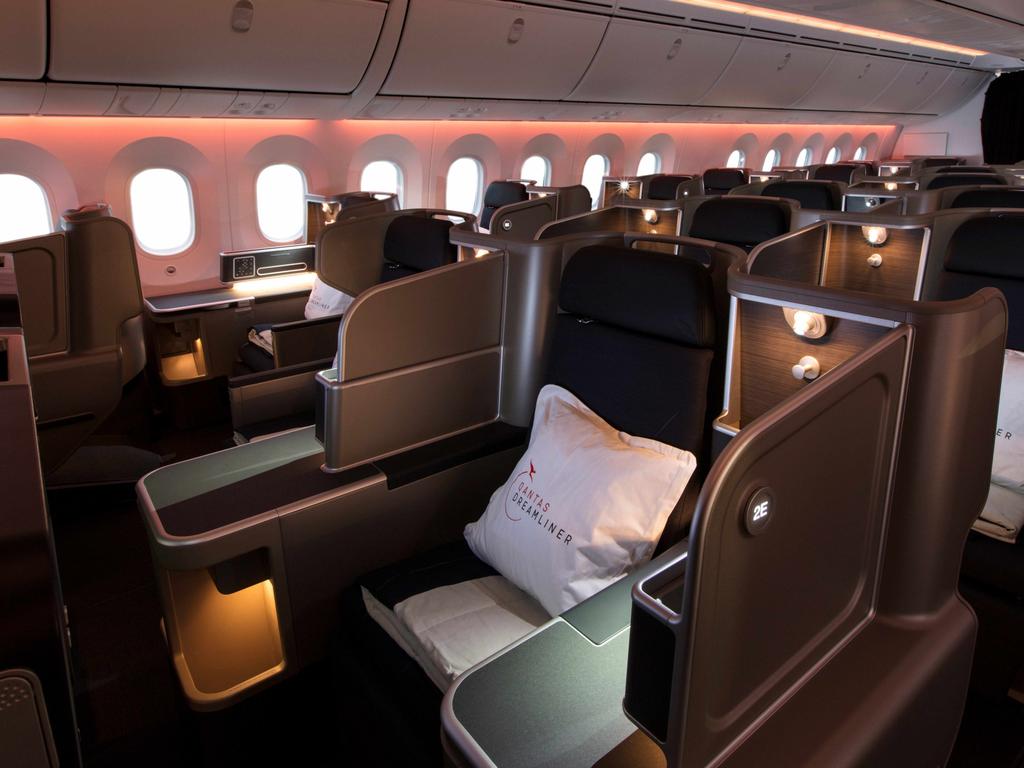The story behind Bali’s first beach resort
A prime piece of beachfront land, an ambitious dream and financial failure all feature in the timeline of this luxe property.

Pass under the Bali Oberoi’s porte cochere and you’ve stepped through time. Year 2023 fades. The limestone walls and thatched alang-alang roofs are so intricately constructed that the buildings seem handwoven. Stone goddesses watch as you make your way across the lawn between shadows and ponds. It could be Bali 1979. Or perhaps ’97? Or, more likely, whatever the year of your first unforgettable trip to Bali.
Time doesn’t stand still on the Bali Oberoi’s 6ha of otherworldly Seminyak shoreline. It talks and walks stories, if not legends. The tales range from the ancient temple in the resort’s grounds to the architectural adventure that gave rise to this kampong-like haven.
To begin the narrative around 1970, an American wheeler-dealer leased the then remote domain with its almost half-kilometre of beachfront. Long on chutzpah but ultimately short on cash, he commissioned a young Australian architect, Peter Muller, to design a home for himself and his wife.

“It was an absolutely magnificent piece of land,” recalled Muller, who died this year. The couple soon dreamed bigger, commissioning Muller to design five extra villas for their friends – “Princess Grace, Salvador Dali, people like that”. The project soon grew to a private resort of 75 rooms and villas, known as the Kayu Aya Club. And then the money ran out.
Possession of the land fell into dispute and the exclusive beach club went belly-up.
Veteran surf journalist Phil Jarratt stayed at the semi-abandoned club in 1975, when surfers and travellers could occupy its rooms for $5 a night. In his book, Bali: Heaven and Hell, Jarratt described Kayu Aya and its “legendary full moon parties in the still-beautiful gardens, with musicians jamming, and stunningly beautiful women from all over the world dancing in the moonlight”.
The lotus-eaters moved on when India’s Oberoi hotel group acquired the lease in early 1978, engaging Muller to transform the property once again, this time to become The Oberoi Bali Hotel. He employed up to 600 Balinese labourers and artisans for the traditional stonework, thatch and carvings in the upgraded villas and lanai rooms. This was the first time a large number of local workers had enjoyed significant financial benefit from a tourism project.
The Oberoi Bali – known today as The Oberoi Beach Resort, Bali – opened in August 1978 with 14 villas, a presidential suite and 48 lanai rooms. As the first genuine five-star beach resort in Bali, its interplay of vernacular tradition with modern interiors set the template for resorts that followed throughout Southeast Asia. Since then its guest ledger has been scrawled with memorable signatures, ranging from Jagger, Versace and Kissinger to David Bowie and Barry Humphries.

I’ve had the good fortune to stay there three times. Random memories of those interludes trip past out of sequence. The seafront turquoise pool with its waters fed by stone turtles. The walled pool villa in which I luxuriated like a bunyip rajah. A romance that crashed and burned like a Seminyak sunset. Uncrowded surfing sessions straight out the front. The beachside Frangipani Cafe with the best breakfast view in the world.
Today, the Oberoi’s diligently maintained rooms and villas are like updated heirlooms, where modern wi-fi meets sunken marble tubs and antique Balinese art. Change, however, is on the way, with major refurbishments planned for next year. “I hope its historical integrity will be maintained,” says John Halpin, the affable, Indonesian-speaking American who’s been general manager since 2012. Over freshly squeezed lime juices in the open-sided Kayu Bar he explains the necessity “to keep the property relevant for the next 20 years and up to Oberoi’s international standards”.
My fingers are crossed. Bali doesn’t impose heritage protection over its secular buildings. The resort is an infant by local standards (some temples here go back 1000 years), but even though “only” 45 years old, it embodies a breakthrough model, and moment, that synthesised past and present architecture, plus Balinese and Western aesthetics.

I came to Bali for the first time in 1979, flying Ansett, surfing on a losmen-and-nasi goreng budget. The Oberoi at that time was an outpost of almost mythical indulgence, seemingly miles up the west coast from Kuta village at somewhere called Seminyak. The best way there was via the beach on a motorbike – permitted back then – a ride along a near-empty shoreline of coconut plantations, rice paddy and jungle scrub.
My destination in those days wasn’t the decadently expensive (as I considered it) resort but a rambling losmen-restaurant that stood further north near the riverside Petitenget temple. You could sleep there for a song, hang out all day, surf at will and contribute best to Bali by not getting in the way.
On revisiting Petitenget years later I found my old crash-pad stylishly reincarnated as the popular La Lucciola restaurant. According to lore, the 15th-century temple was built where a travelling Hindu priest once left a sacred chest. Since then the beach from Pura Petitenget down to Pura Dalem temple in the Oberoi grounds has been considered a place of spiritual power.

In 1979 about 40,000 visitors arrived in Bali. By 2019, the year before Covid, the figure was 6.28 million. The once empty crescent of sand that runs from Kuta to Seminyak and beyond is an unbroken berm of resorts, bars, walkways, surf schools, hip clubs and shiny, happy people. The beat goes further on, stretching north to similarly thronged Canggu.
Meanwhile, the white-noise rumble of the sea is the backing track to an Oberoi day. Frangipani scent hangs in the air along with incense and sea salt. Come night, Legong dancers still enchant the diners seated around Muller’s sunken amphitheatre, much as their Balinese parents did and their own offspring hopefully will. Framed by palms, the Oberoi guards a last stretch of unimproved shoreline, defying time.
In the know
The Oberoi Beach Resort, Bali, is a 45-minute drive from Ngurah Rai Airport, Denpasar. Transfer by resort limousine or local taxi for about $30. Lanai Rooms from $475, plus 21 per cent tax and service charge. Combine six nights’ stay at The Oberoi resorts in Bali and Lombok and receive complimentary inter-island and land transfers.
Upmarket Seminyak restaurants include Ku De Ta and La Lucciola, while nearby Jalan Kayu Aya is a thriving strip of boutiques, spas, bars and restaurants.
John Borthwick was a guest of Oberoi Hotels.





To join the conversation, please log in. Don't have an account? Register
Join the conversation, you are commenting as Logout